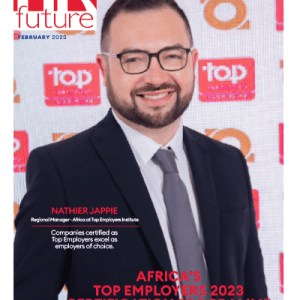The cost of health care is both a prominent election-year issue and an everyday concern for Americans. While a political solution to the problem has yet to emerge, there are things HR teams can do to help employees manage their health care expenses.
Many American companies have responded to rising health care costs by providing Health Savings Accounts (HSAs). According to data from the Employee Benefit Research Institute (EBRI), the availability of HSAs has risen steadily over the past several years, especially among medium-sized and large firms.
Of course, providing an HSA is just the start. For HR Professionals, there is an opportunity to engage employee enthusiasm for this benefit so that workers fully utilize these plans to help with near-term health-related costs and as a powerful savings vehicle for future medical expenses. HSA plans are unique in their ability to benefit employees today while also offering long-term advantages; to the extent these plans are well-utilized, there is potential to increase employee satisfaction and staff retention.
Employees continue to worry about health care costs
According to a 2019 report by the Kaiser Family Foundation, over the previous decade the average cost of a family’s health insurance premium increased by 54% – nearly three times the general inflation rate.
People have noticed. A CBS News Poll finds that roughly two-thirds of Americans cite cost as their biggest health care concern. A Gallup poll at the start of 2020 finds that 81% of respondents specify health care as extremely or very important in this year’s election – and that was even before the coronavirus pandemic raised the health care stakes.
Chances are, your employee base has the same concerns about health care costs. And, of course, the concerns of your workforce become the concerns of the HR team.
Health Savings Accounts: The triple threat defence
The cost of health care is a problem that only gets worse with time. Not only have health care expenses steadily risen faster than the rate of inflation year after year, but health care needs tend to grow as a person gets older. HR Professionals are positioned to help employees understand the full potential of their HSA plan. You can give employees information that will help them make better decisions.
Here are nine ways HR Managers can explain the benefits and guide employees to getting the most out of the HSA program your company offers:
- Start with the basics. Many employees don’t understand what an HSA is. Explain to your employees that HSAs build a tax-exempt cash reserve for medical expenses. Help them understand that HSAs provide a tax deduction for savings that can be used to pay any future medical expenses, including health insurance premiums and out-of-pocket expenses. Crucially, this tax benefit is even better than the tax advantages of retirement plans in a couple of ways. Money can be taken out of an HSA at any time as long as it’s used for legitimate medical expenses. HR experts should stress that HSA money is never taxed, even when it’s withdrawn from the plan.
- Explain the difference between FSAs and HSAs. Employees may confuse various employee benefit options, such as flexible spending accounts (FSAs) and HSAs. It may be helpful to provide reminders during the enrollment process highlighting that while FSA accounts must be exhausted each year, HSA investments can be rolled over for use in future years. Given this and the tax advantages of HSAs, they can be used to supplement retirement savings. After all, health care is a significant part of retirement spending, so having a fund dedicated just to those expenses can help other retirement savings go further.
- Fully explain tax saving features: People love saving on taxes. Highlight the fact that HSAs have tax advantages superior even to those of retirement plans. Employees don’t pay taxes on the money they put into an HSA or on the money they take out, as long as it’s used for legitimate medical expenses.
- Explain the deductible. Emphasize that HSAs can be used to cover costs before their deductible is met. HSAs are designed to be used in conjunction with high-deductible health plans (HDHPs). HDHPs give your employees the option of paying lower insurance premiums in exchange for higher deductibles on covered health expenses. HR communications can explain that relatively healthy employees who are less likely to experience routine out-of-pocket expenses, can tap into their HSA to cover costs before their deductible is met while feeling secure that their health plan is a backstop against major medical setbacks.
- Empower employees to understand the flexibility they have. One of the most powerful HSA advantages that HR professionals should emphasize is that any unused money in the accounts can be rolled over, accumulated and invested. This allows employees to build up a tax-free fund of savings they can use for medical expenses in the future, including in retirement.
- Provide guidance on HSA vs. 401(k) contributions. Employees may need help figuring out how to decide between HSA and 401(k) contributions. Generally speaking, the first goal should be to maximize use of any employer match, whether on the HSA or 401(k) plan. Beyond that, the superior tax characteristics of an HSA may make it a logical first choice for any additional money available. Once the HSA contribution maximum is reached, if any further money is available to set aside, it should go into the 401(k) plan.
- Educate employees with regular informational sessions. Hold informational sessions on why it can be important to contribute the maximum allowed to an HSA annually and to invest those funds beyond cash equivalents, if possible.
- Bust myths. Employees may view HSAs as just a means to pay near-term medical expenses. The EBRI finds that the average contribution to HSAs is less than one-half the allowable maximum for family coverage, and barely more than the minimum HDHP deductible. This suggests that employees are typically using the plans to pay year-to-year medical expenses and ignoring the long-term tax-advantaged savings potential of HSAs.
- Coach employees on ways to maximize potential. Employees aren’t often investing HSA assets for the long-term. The EBRI also finds that employees are rarely investing them in assets other than cash equivalents. This suggests that many are ignoring the potential to use HSAs to build wealth to pay for health care expenses in retirement.
From an employee’s standpoint, any benefit program is only as good as the use they get out of it. From the HR department’s viewpoint, the value of any benefit program depends on how much employees appreciate it. Helping your employees unlock the full potential of HSAs should enable them to manage health care expenses while also increasing their satisfaction with their employer-provided benefits.
Richard Barrington is a Senior Financial Analyst at MoneyRates.com in California.























